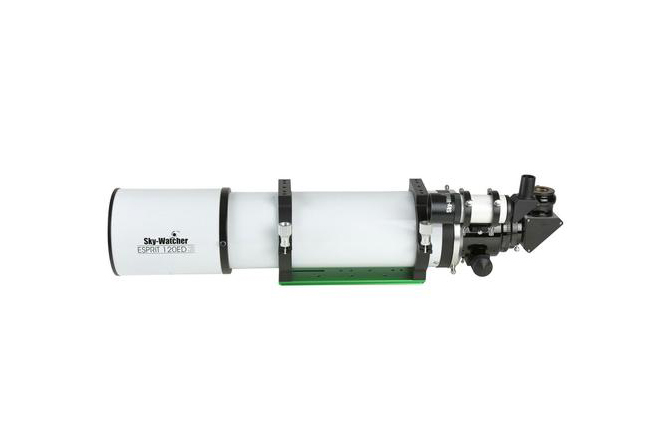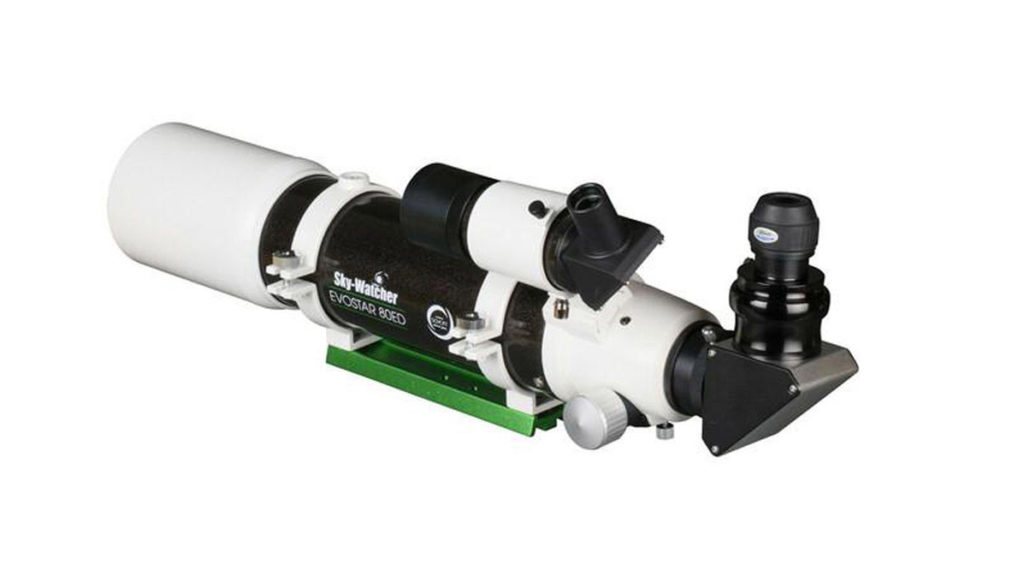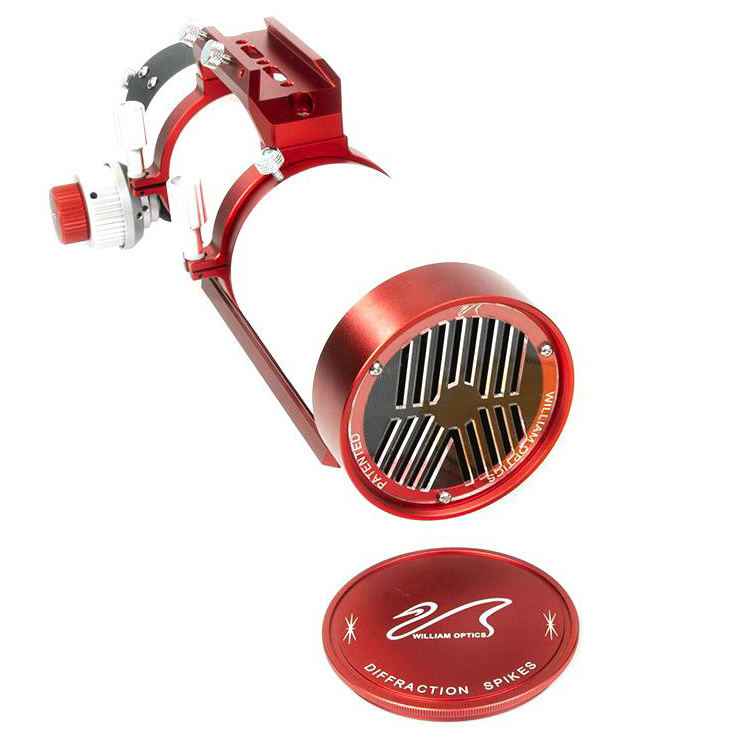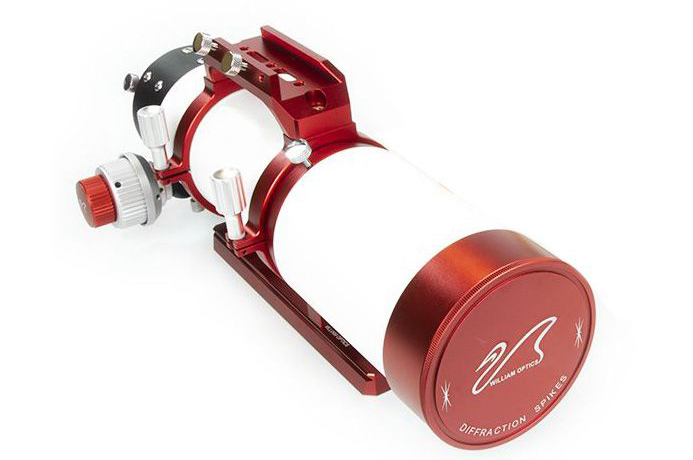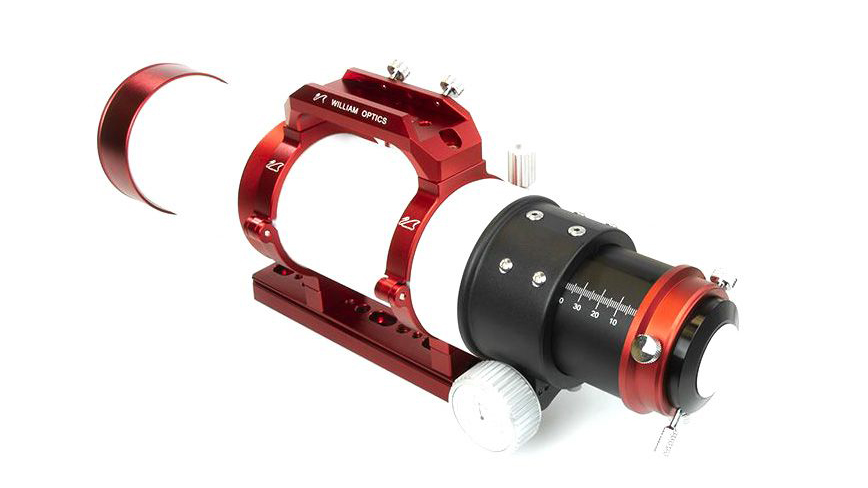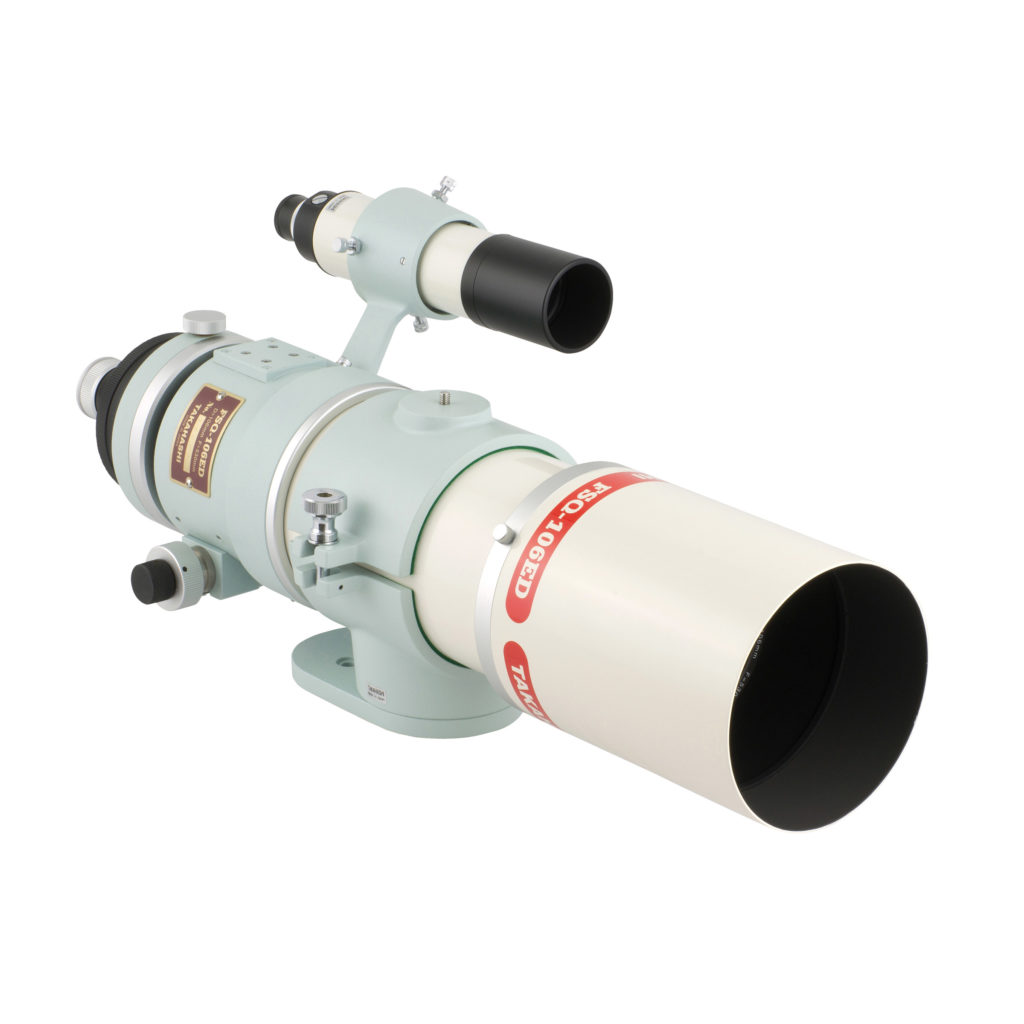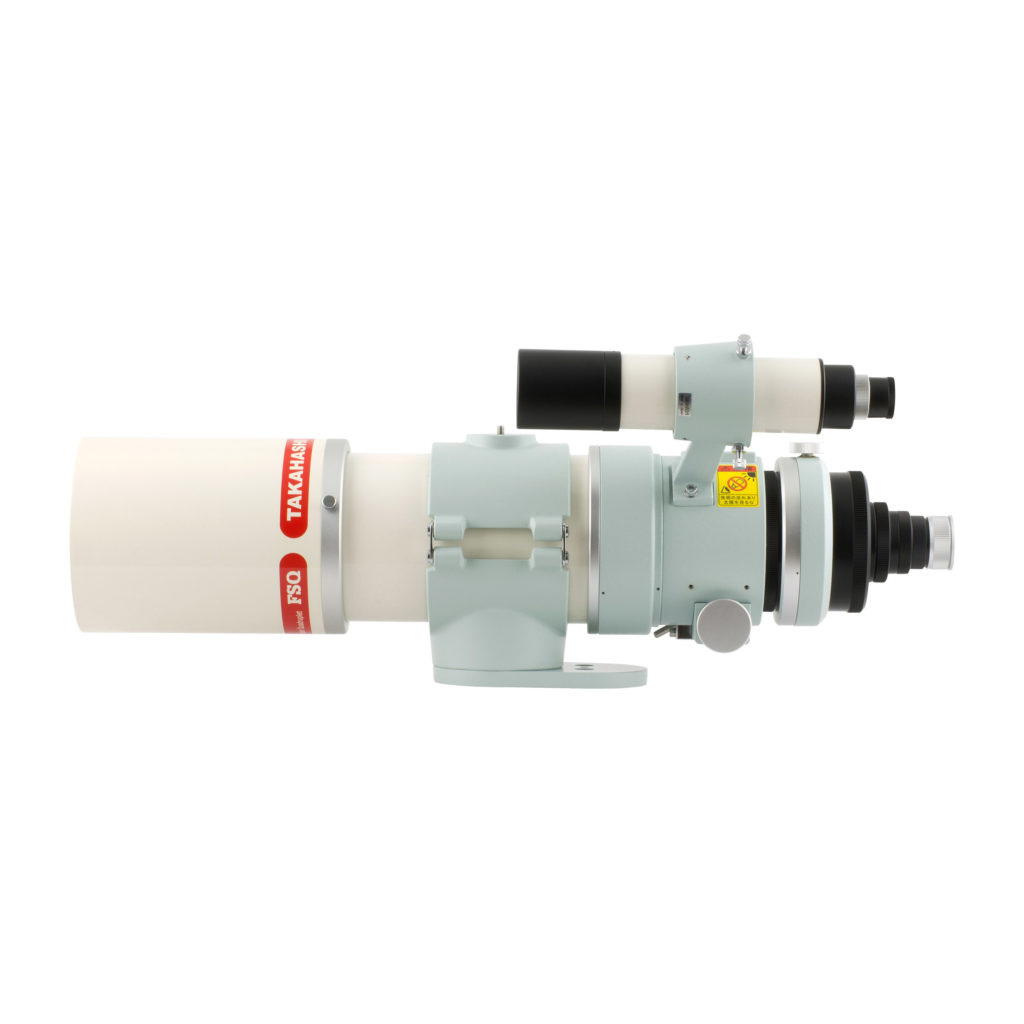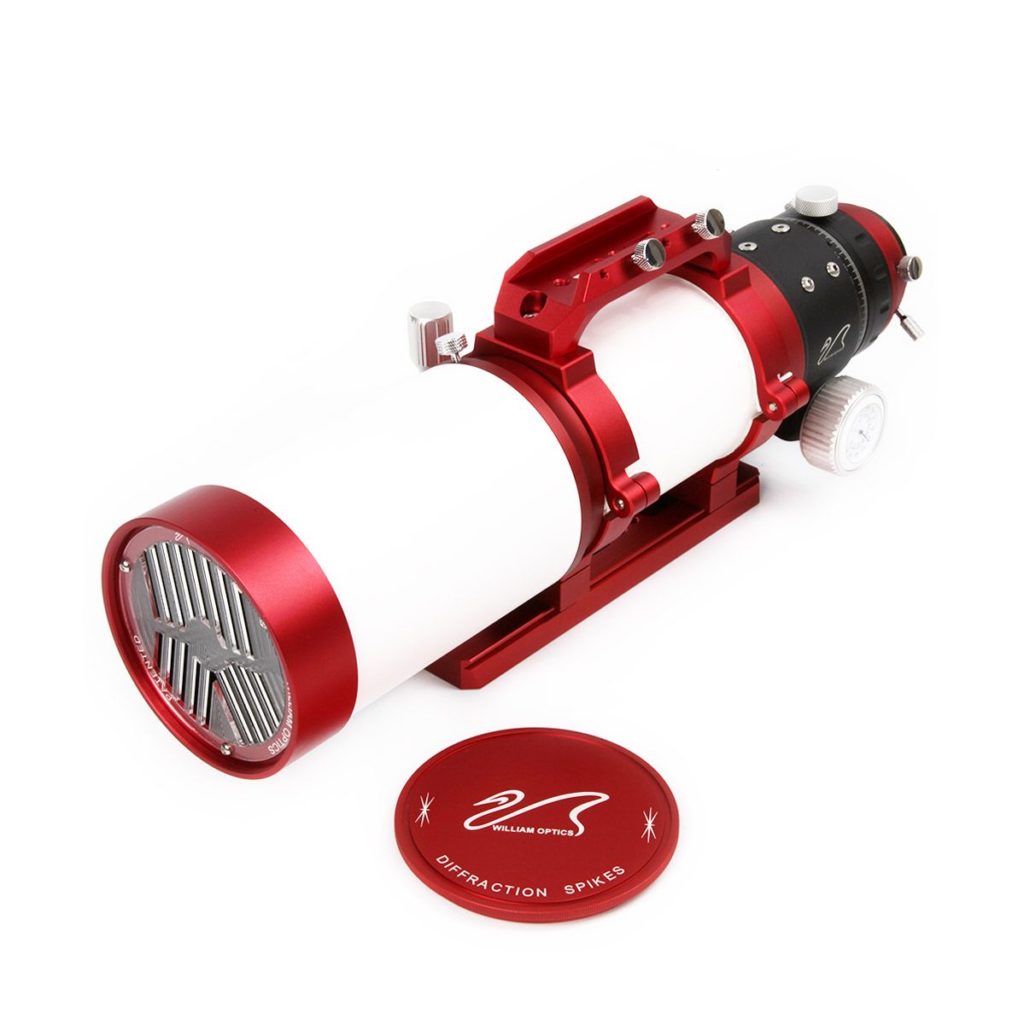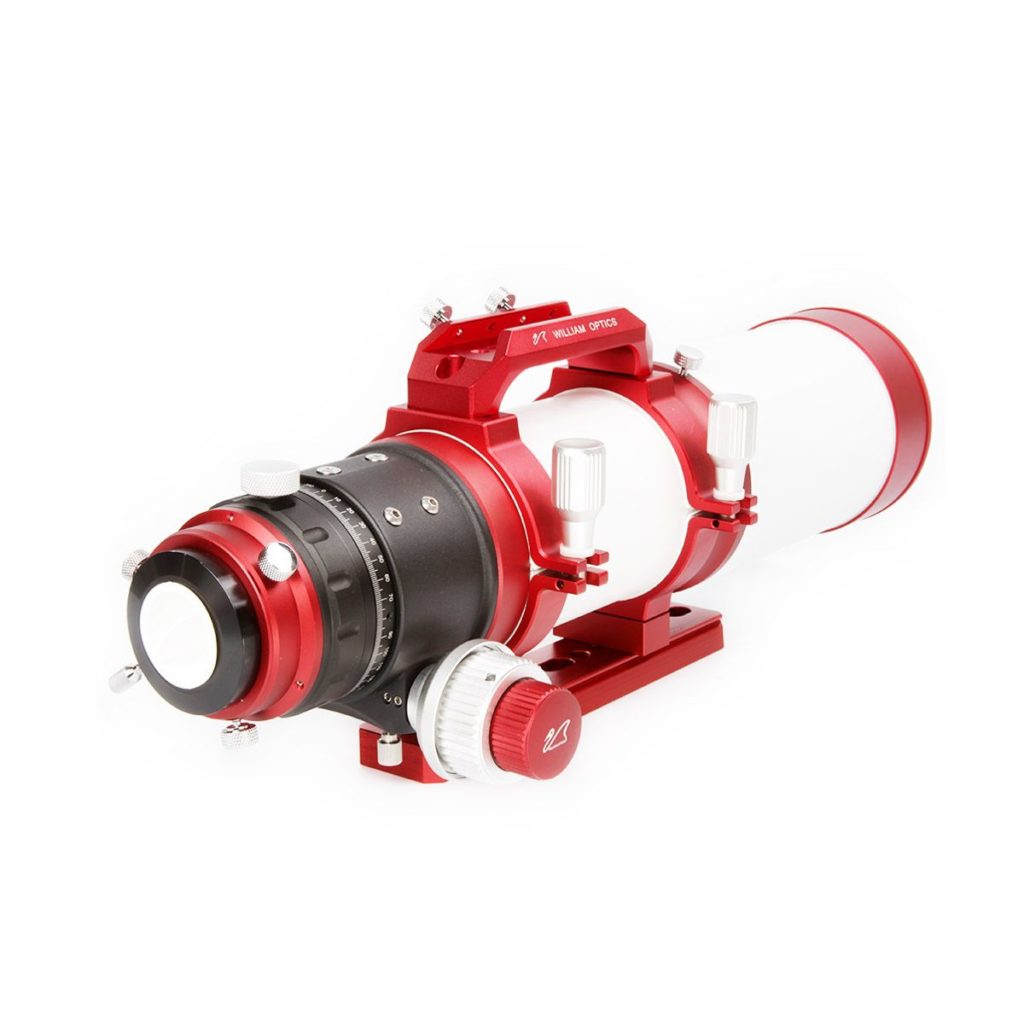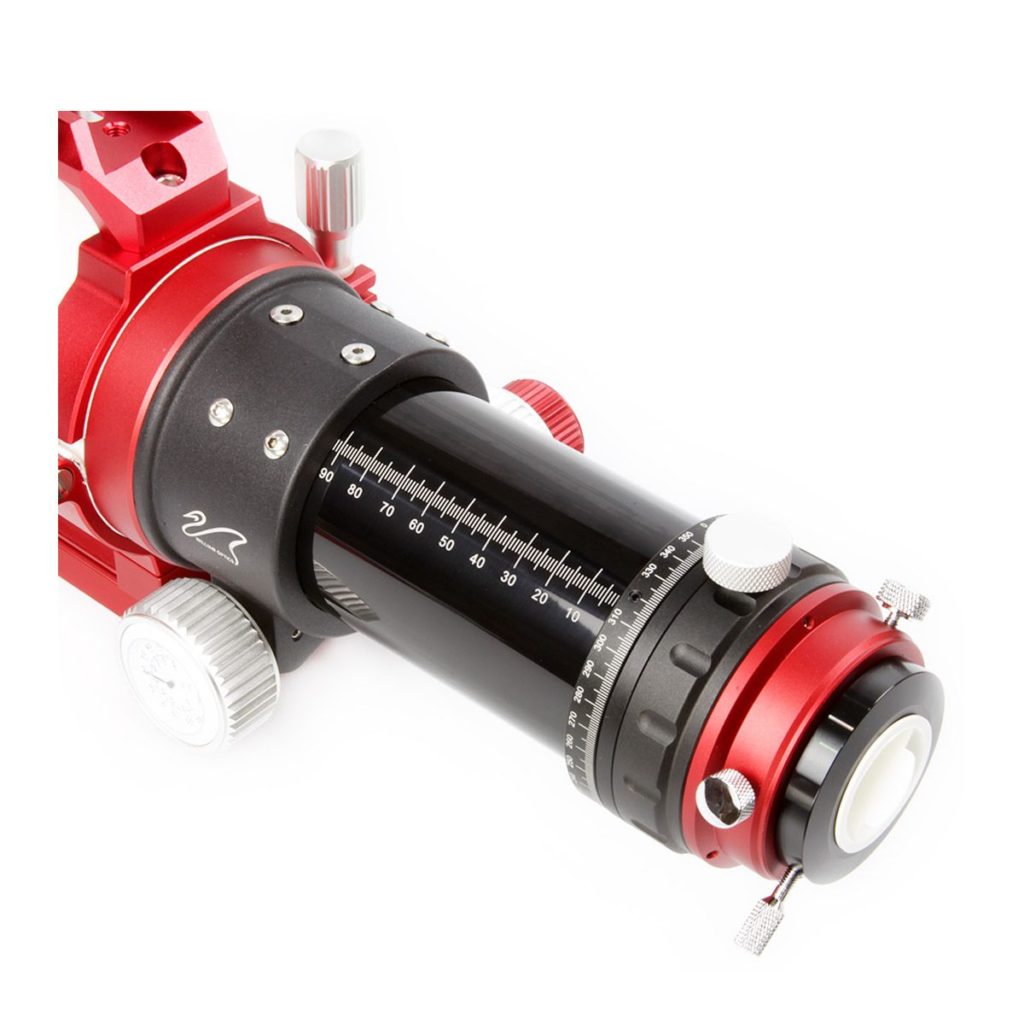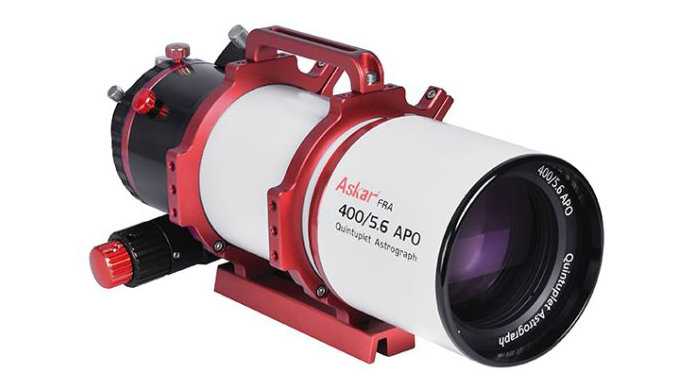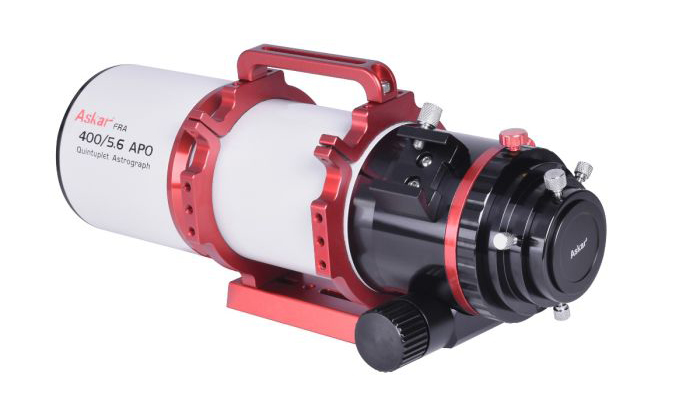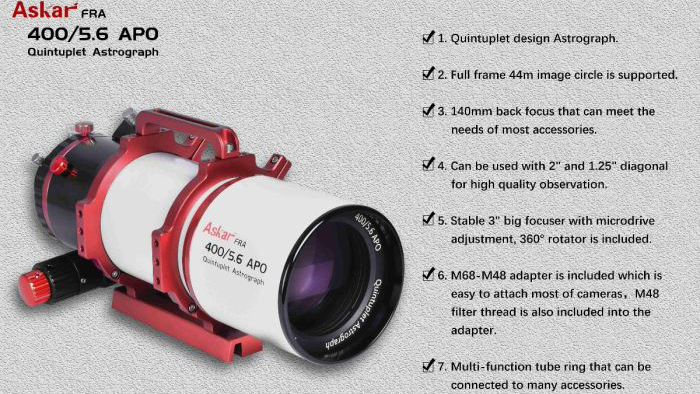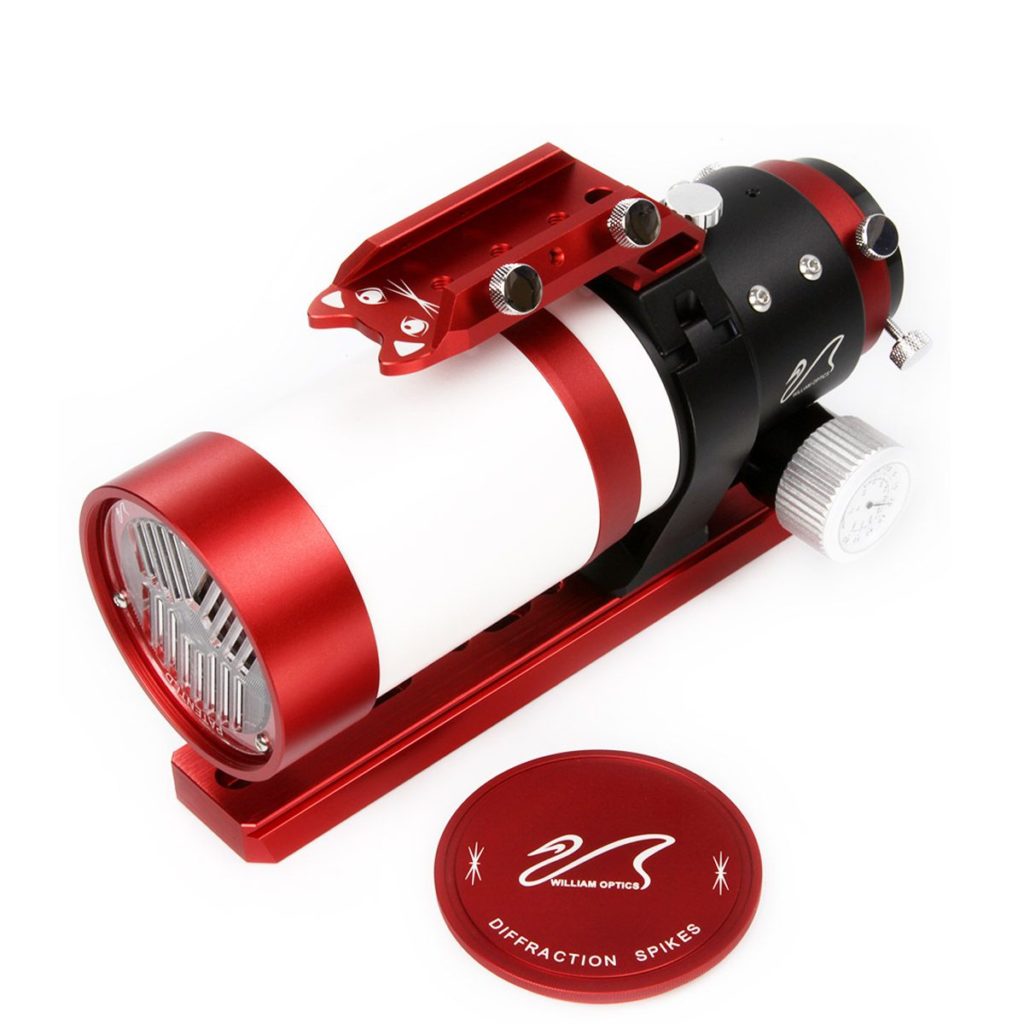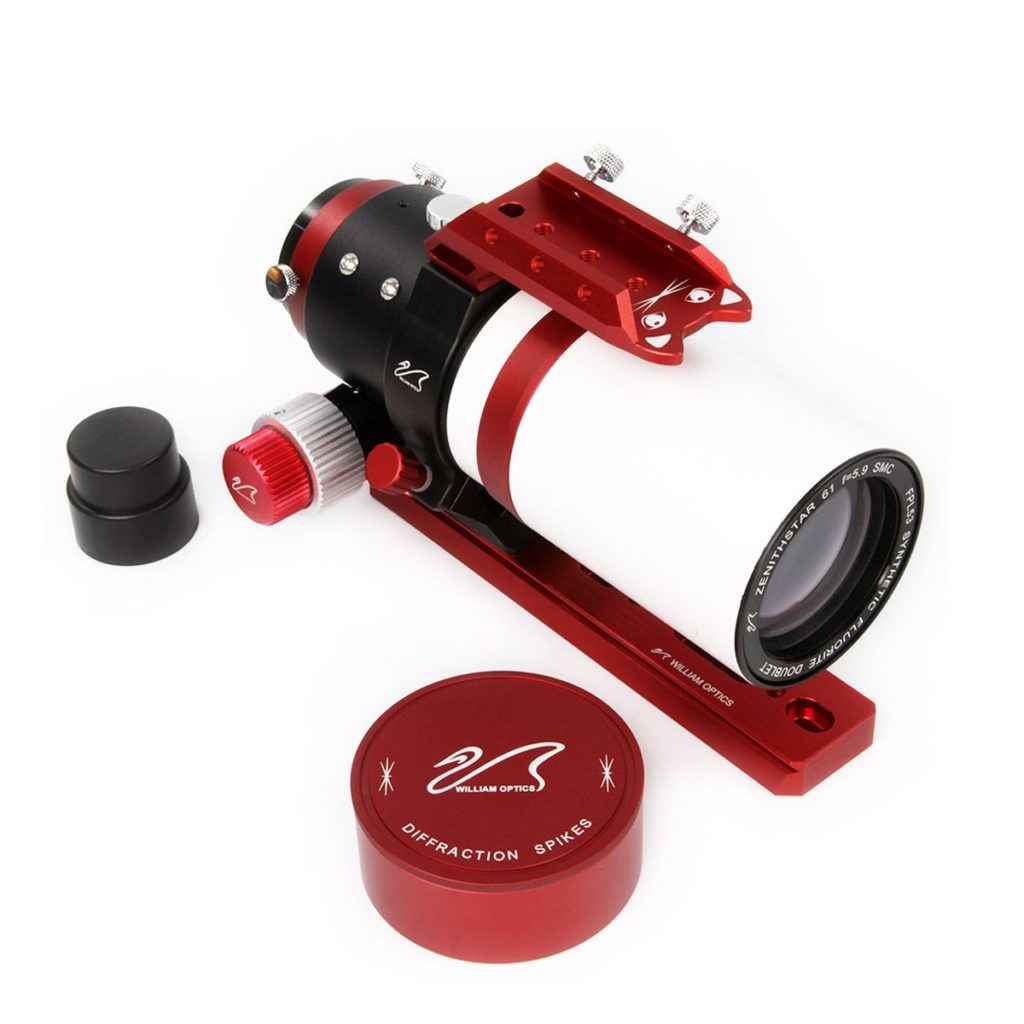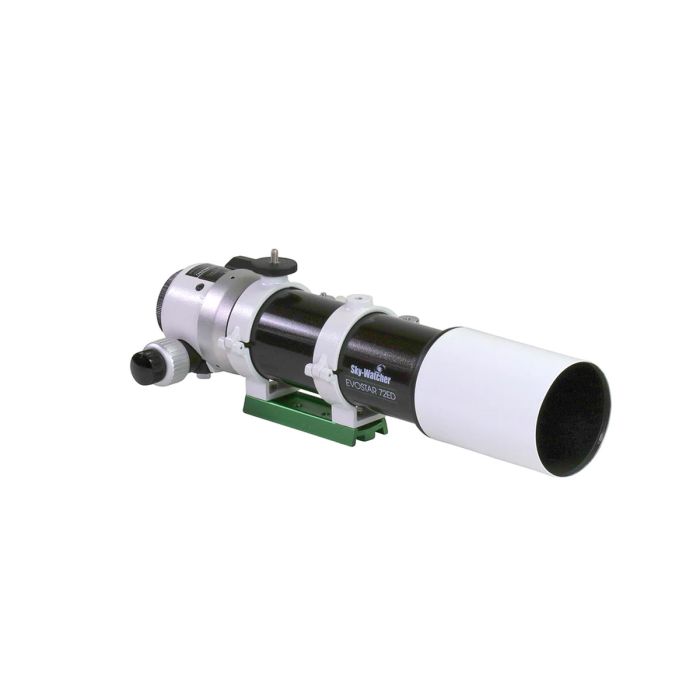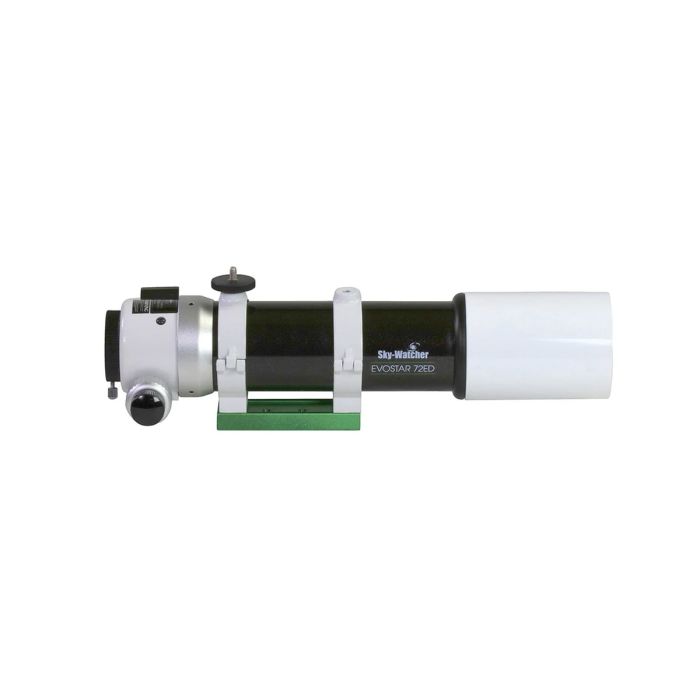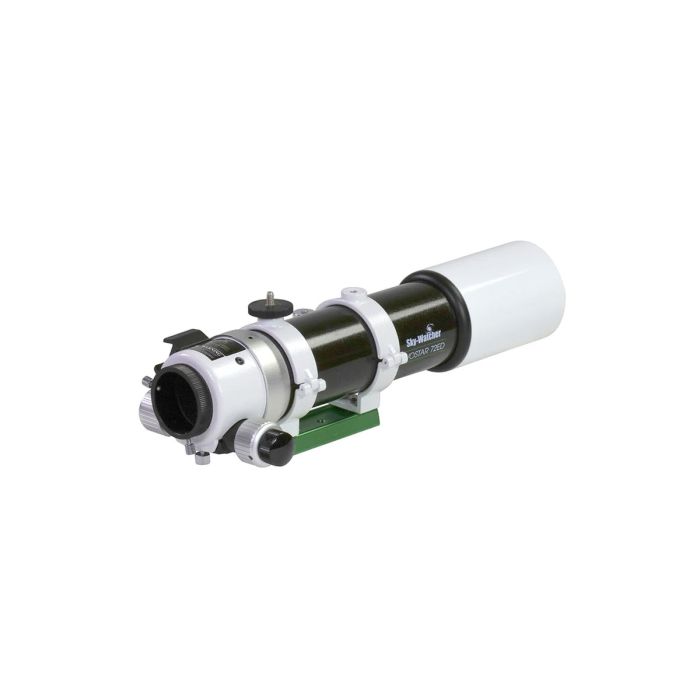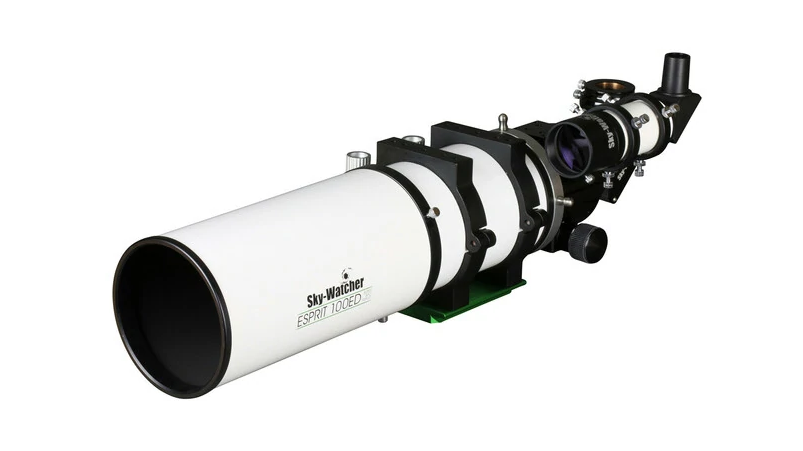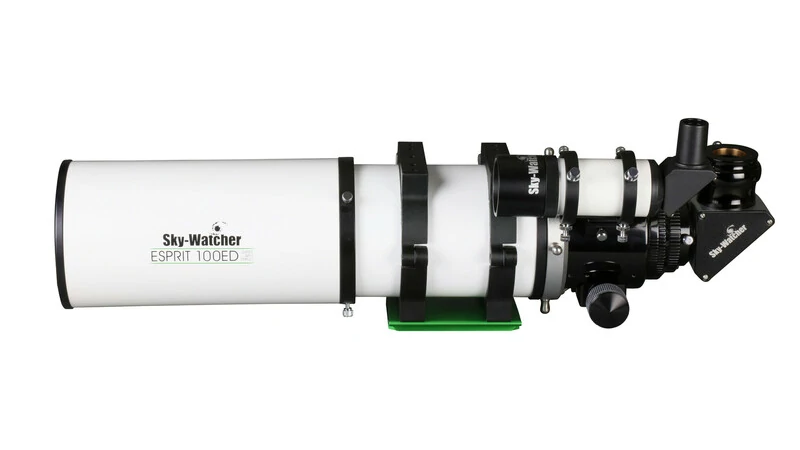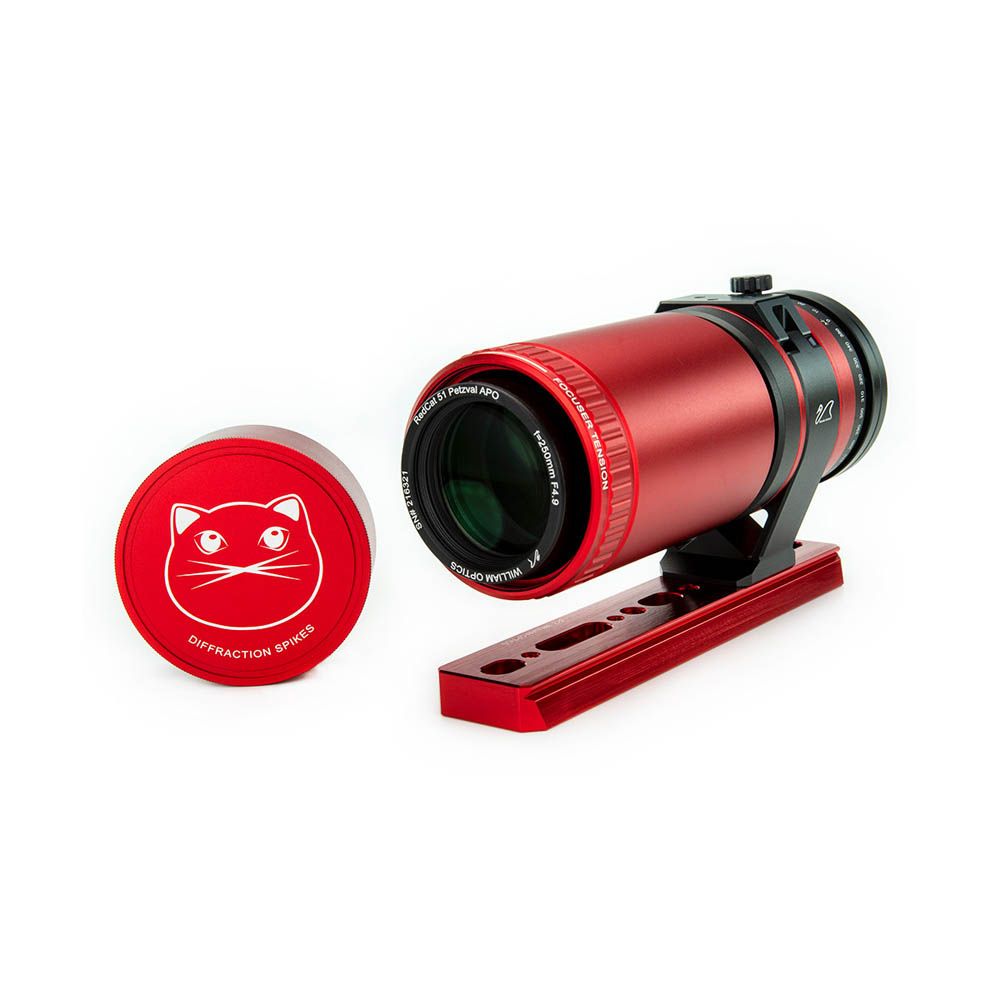Are you wondering what refractor telescopes are most popular among astrophotographers in 2024? Then you’ve come to the right blog! Based on credible online sources, the top 10 results showed that William Optics and SkyWatcher telescopes hold a special place in the hearts of astrophotography enthusiasts. Notably, the William Optics RedCat 51mm, the Sky-Watcher Esprit 100 ED, and the Sky-Watcher Evostar 72 ED claim the top three positions in 2024. In this blog, I first explain why refractor telescopes are so popular among both beginning and advanced astrophotographers. I’ll also discuss key considerations when choosing a refractor telescope, and I’ll give you an overview of the top 10 most sought-after refractor telescopes in 2024.
Why are refractor telescopes so loved among astrophotographers?
For backyard astrophotographers, refractor telescopes have become a beloved choice when capturing the captivating beauty of the night sky. There are several compelling reasons behind this preference. Firstly, refractor telescopes are renowned for their lightweight design, making them easy to transport and store within the confines of your home. Additionally, their low maintenance requirements make them particularly appealing to beginners and enthusiasts alike. One notable advantage of refractor telescopes is the absence of the bothersome diffraction spikes often encountered with reflector telescopes, resulting in cleaner and more visually appealing star images in your photographs. This can be attributed to the fact that refractors do not rely on mirrors with spider vanes, which are prone to creating diffraction artefacts. Another significant benefit is the elimination of the need for collimation, a process specific to reflector telescopes that involve aligning mirrors to ensure sharp images of celestial objects. With refractors, astrophotographers can bypass this intricate calibration procedure, saving valuable time and effort. Whether it’s the portability, minimal maintenance, or superior star imaging quality, refractor telescopes continue to captivate and inspire astrophotographers of all levels, offering a seamless and enjoyable experience under the awe-inspiring night sky.
Are there any downsides to using a refractor telescope for astrophotography?
Well, yes. The strengths and limitations of refractor telescopes for astrophotography become evident when considering different celestial objects. Refractors excel in capturing widefield objects in space, such as expansive nebulae within our Milky Way galaxy. These nebulae, composed of ionized hydrogen, oxygen, and other elements, span significant distances and appear several degrees wide – multiple times the size of our Moon – in the night sky. Examples include the Orion Nebula, Horsehead Nebula, and Eagle Nebula. However, refractors are less suited for planetary imaging. Planets, being significantly smaller than the moon, require telescopes with long focal lengths to capture intricate details such as the rings of Jupiter, its Great Red Spot, cloud bands, or the polar caps and Olympus Mons on Mars. Specialized telescopes such as the ones discussed here are more suitable for this purpose.
Refractors can still be utilized to photograph close approaches and conjunctions of multiple planets and the Moon in the night sky. While most galaxies beyond our Milky Way appear relatively small through a refractor telescope, exceptions like the Andromeda galaxy, spanning 3 degrees, that’s roughly 6 times the Moon’s size, and the Pinwheel Galaxy with an apparent size of about 28 arcminutes, slightly smaller than the Moon, can be captured effectively. Understanding these considerations allows astrophotographers to leverage the strengths of refractor telescopes for widefield astrophotography while exploring other options for planetary imaging and capturing smaller objects in the night sky.
Key Considerations for Choosing a good Refractor Telescope for Astrophotography
When it comes to astrophotography, choosing the right equipment is crucial. There are several essential features to consider when selecting a refractor telescope for astrophotography, including extra-low dispersion glass, low f/ratio, the number of lens elements used, aperture, focal length, and cost.
Extra-Low Dispersion (ED) Glass
Extra-low dispersion glass is a critical feature in a refractor telescope for astrophotography. ED glass helps to minimize chromatic aberration, which can cause color fringing and reduce image sharpness. By using ED glass, the telescope can achieve sharper, more accurate color rendition and improved overall image quality. When considering a refractor telescope, look for models that incorporate high-quality ED glass elements to ensure optimal performance. Some well-known high quality glass elements include Ohara’s FPL-53 and Hoya’s FCD-100 glass. Apochromatic telescopes are specifically designed to correct for chromatic aberration, which causes color fringing. In addition to that, a flatfield refractor telescope also includes an even illumination across the entire image field, minimizing any vignetting or uneven brightness. It corrects for optical imperfections such as field curvature and astigmatism, resulting in sharp and evenly illuminated images from edge to edge. With apochromatic telescopes, you often need an additional flatfield corrector to illiminate curvature towards the edges of your astropictures, resulting in elongated stars.
Number of Lens Elements
The number of lens elements in a refractor telescope affects the overall optical performance. In general, refractors with more, high quality lens elements, tend to produce sharper and more contrast-rich images. However, it’s important to strike a balance, as too many glass elements also result in increased weight and cost. Look for refractors that utilize a reasonable number of high-quality lens elements, typically in the range of two to four, to achieve a good balance between image quality and optical design.
Aperture
Aperture refers to the diameter of the objective lens or primary mirror of a telescope. It plays a crucial role in determining the telescope’s light-gathering capability and resolving power. For astrophotography, a larger aperture is generally preferred, as it allows for better detail and higher image quality. However, larger apertures can make the telescope heavier and more expensive. Consider your specific needs and budget when choosing the aperture size, but aim for a reasonable balance between performance and portability.
Focal Length
The focal length of a refractor telescope determines the magnification and field of view. Longer focal lengths provide higher magnification and narrower fields of view, making them suitable for capturing smaller objects like smaller nebulae and galaxies in space. On the other hand, shorter focal lengths offer wider fields of view, making them ideal for wide-angle shots of larger nebulae and galaxies. Consider your astrophotography goals and subject preferences when selecting the focal length of your refractor telescope. Most refractor telescopes range from about 250mm to about 800mm, making them great for widefield astrophotography.
Low f/Ratio
The f/ratio of a refractor telescope is an important factor to consider, especially for astrophotography. The f/ratio determines the telescope’s speed or light-gathering ability. A lower f/ratio indicates a “faster” telescope, meaning it can capture more light in a shorter exposure time. This is crucial for capturing detailed and vibrant celestial objects for deep-sky astrophotography. Look for refractors with low f/ratios, such as f/7 or lower, to ensure better image acquisition and reduced exposure times.
Cost
Cost is an important consideration for most astrophotography enthusiasts. Refractor telescopes vary greatly in price, depending on factors like quality, aperture, glass elements and additional features. Determine your budget and prioritize the features that are most important for your astrophotography needs. While it’s tempting to opt for the most affordable option, investing in a high-quality refractor telescope will yield better results in the long run.
Top 10 Most Popular Refractor Telescopes among Astrophotographers
When it comes to exploring the vast expanse of the night sky, having the right telescope is essential. With countless options available, it can be overwhelming to choose the perfect telescope for your stargazing and astrophotography needs. To help you navigate through this vast selection, I have compiled a list of the top 10 most popular telescopes on the market. It’s important to note that this list is based on the real-world experiences of astrophotographers who have used these telescopes to capture stunning images of celestial objects. I have considered both the number of users and images posted on reputable sources such as astrobin.com and cloudynights.com, which showcase the capabilities and performance of these telescopes in the hands of experienced astrophotographers. I only included telescopes with a minimum of 100 registered users and over 1000 astrophotography images shared. However, it is crucial to remember that everyone’s needs and preferences may vary. While these telescopes have gained popularity among astrophotography enthusiasts, it is always recommended to do your own research before making a purchase. Factors such as your experience level, budget, and specific astrophotography goals should be taken into account when choosing a telescope. Without further ado, let’s explore the top 10 most popular refractor telescopes on the market in 2024.
10. SkyWatcher Esprit 120ED
The Esprit 120ED refractor telescope is an outstanding choice for highly demanding astrophotography enthusiasts, looking to elevate their astrophotography. Although this is certainly not the most affordable telescope, there are several compelling reasons why this is one of the more popular telescopes among astrophotographers.
The Esprit 120ED features a high-quality triplet lens design composed of three optical elements. This design significantly reduces chromatic aberration, ensuring exceptional color correction and sharpness in captured images. It virtually eliminates false color, allowing for accurate and true-to-life renditions of celestial objects. With a generous 120mm aperture, this refractor telescope gathers ample light for stunningly detailed views of galaxies, nebulae, and other deep-sky objects. The 840mm focal length and f/7 focal ratio provide a versatile balance between magnification and field of view, allowing for diverse astrophotography opportunities.
The Esprit 120ED is equipped with a 3.4-inch dual-speed rack-and-pinion, Helinear track focuser. This precise and smooth focuser enables fine adjustments for achieving optimal focus, crucial for capturing crisp and detailed images of celestial targets. The rolled steel optical tube with a glossy white finish not only provides durability but also offers a touch of elegance. This robust construction ensures stability and minimizes vibrations during observation and astrophotography sessions, contributing to excellent image quality.
The SkyWatcher Esprit 120mm ED is available at Agena Astroproducts (USA/WW), High Point Scientific (USA/WW), and Astroshop (EU/WW).
9. SkyWatcher Evostar 80ED
Astrophotographers seeking a more affordable, reliable and versatile telescope for their imaging pursuits should seriously consider the Skywatcher Evostar 80ED. This telescope offers a host of features that make it an excellent choice for astrophotography. The Evostar 80ED boasts a doublet apochromatic optical design, utilizing a two-element, air-spaced optical assembly. This design effectively minimizes false color, ensuring that captured images are sharp and true to life. With an 80mm aperture, 600mm focal length, and f/7.5 focal ratio, this telescope strikes a balance between a wide field of view and ample magnification, making it suitable for capturing a variety of celestial objects.
The 2-inch dual-speed Crayford-style focuser provides precise and smooth focusing adjustments, critical for achieving optimal image quality. Its robust construction ensures stability and durability during astrophotography sessions. The Evostar 80ED features an aluminum tube coated with a glossy, black diamond metal-flake finish. Apart from enhancing its visual appeal, this coating helps to reduce internal reflections and improve overall image contrast. The telescope comes with several valuable accessories, including two 1.25-inch eyepieces, a 2-inch Crayford-style focuser, tube rings, a V-style dovetail, an 8×50 right-angle finderscope, a 2-inch dielectric diagonal, and a foam-lined aluminum case. These accessories enhance the functionality and convenience of the telescope, allowing astrophotographers to get started with their imaging endeavors right out of the box. With its compact size and lightweight design, the Evostar 80ED is highly portable and easy to set up. This makes it an ideal choice for astrophotographers who value versatility and convenience in their equipment.
The SkyWatcher Evostar 80ED is available at Agena Astroproducts (USA/WW), High Point Scientific (USA/WW), and Astroshop (EU/WW).
8. William Optics 73mm Zenithstar
Astrophotographers seeking a compact and high-performing refractor telescope for their imaging endeavors should consider the William Optics ZenithStar 73. This exceptional telescope offers a range of features that make it an excellent choice for astrophotography.
The ZenithStar 73 is built with precision and craftsmanship, making it a versatile instrument for wide-field deep-sky imaging with DSLRs or dedicated astronomy cameras. Its air-spaced multicoated doublet objective lens, featuring Ohara FPL-53 ED glass, ensures superb control of false color and delivers sharp, high-contrast images. When combined with a William Optics field flattener (sold separately), the scope provides a flat field across the entire diagonal of a full-frame sensor. With a focal ratio of f/5.9 and a focal length of 430mm, the ZenithStar 73 is perfectly suited for capturing extended celestial objects such as nebulae and large galaxies (e.g. Andromeda). Despite its impressive performance, the telescope remains compact and portable. Weighing just 2.9kg (6.4lbs) and measuring 315mm with the dew shield retracted, it can easily be transported and even qualifies as carry-on luggage with most airlines.
The telescope features a heavy-duty 10:1 dual-speed 2.5″ rack and pinion focuser with tension screws, ensuring secure holding of cameras and accessories without slipping or image shift. The focuser also includes an integrated thermometer to help track small temperature changes that may affect focus during imaging sessions. The ZenithStar 73 comes with a patented objective lens cover that doubles as a clear Bahtinov focusing mask, simplifying the process of achieving sharp focus during setup. It also includes convenient accessories such as dual mounting rings with a CNC-machined carrying handle, a reversible dovetail for easy mounting to tripods, and a soft carry case for added protection and portability.
The William Optics 73mm Zenithstar is available at Agena Astroproducts (USA/WW), High Point Scientific (USA/WW), and Astroshop (EU/WW).
7. Takahashi FSQ-106ED
Takahashi in Japan is one of the best telescope manufacturers worldwide, with minimal subcontractors, to maintain perfect control of all their products. The Takahashi FSQ-106EDX4 is an extraordinary advancement of the beloved FSQ-106 telescope renowned among astronomers and astrophotographers alike. This marvel of optical engineering represents the pinnacle of flat-field super quadruplet refractors. Crafted with meticulous precision, the FSQ-106EDX4 boasts a cutting-edge flat field advanced Petzval quadruplet design, enriched with extra-low dispersion (ED) glass. This combination ensures impeccable color correction across the entire spectrum, from UV to IR wavelengths, delivering breathtakingly vivid and true-to-life celestial imagery.
The optical excellence of this telescope translates into remarkable performance, with pinpoint star images and unparalleled field illumination. Designed specifically for digital imaging, its four-element, four-group configuration guarantees stunning visual clarity and fidelity.
Among its standout features are:
- Brand-new optics tailored for digital imaging, incorporating two premium ED elements for exceptional color fidelity.
- An advanced Petzval design, inclusive of an expansive G3 lens, ensuring superior image brightness and clarity.
- A flawlessly flat field, eliminating the need for additional flatteners, covering an expansive 88 mm image circle.
- A generous 178 mm back focus, accommodating a myriad of imaging cameras, accessories, 2-inch diagonals, and various visual devices, including bino viewers.
- A robust 4-inch focuser equipped with a camera angle adjuster, facilitating precise rotation of CCD cameras for optimal framing.
- An anti-torquing draw tube featuring a secondary rack with ball bearings, preventing any rotation when accommodating heavy instrument packages.
- Remarkable portability, with a compact length of under 17 inches when the lens shade is retracted, making it suitable for travel even by air.
In essence, the Takahashi FSQ-106EDX4 stands as a testament to innovation and excellence in astronomical instrumentation, empowering enthusiasts and professionals alike to explore the cosmos with unparalleled clarity and precision.
The Takahashi FSQ-106ED is available at Agena Astro (USA/WW)
6. William Optics 81mm GT (Gran Turismo)
Astrophotographers in search of a premium and versatile refractor telescope for their astrophotography endeavors should consider the William Optics GT81mm. This telescope offers a range of features that make it an excellent choice for both imaging and visual observation. Here’s why:
The GT81mm features an apochromatic f/5.9 triplet objective with FPL-53 glass, ensuring exceptional color correction and razor-sharp images. The air-spaced triplet design and special super-high transmission (STM) coatings on all surfaces contribute to superb optics and high contrast. When used with a William Optics field flattener (sold separately), the telescope delivers a flat field across the entire diagonal of a full-frame sensor, making it perfect for astrophotography. The telescope’s build quality is exceptional, with rock-solid mechanics and premium aesthetics. The heavy-duty aluminum tube is coated with a beautiful white powder finish, and the high-quality mounting rings securely hold the telescope to the mount. The compact form factor and light weight of the GT81mm, weighing just 3.9kg (8.6lbs), make it easy to transport and travel with. In fact, its retracted length of 390mm (15.4″) allows it to qualify as carry-on luggage with most airlines.
The GT81mm features a heavy-duty 10:1 dual-speed 2.5″ rack and pinion focuser with tension screws, ensuring a secure hold for cameras and accessories without slipping or image shift. The focuser includes a built-in thermometer to track temperature changes during observation sessions, allowing for precise focus adjustments. Additionally, the telescope incorporates a patented objective lens cover that doubles as a clear Bahtinov focusing mask, making it effortless to achieve sharp focus for astrophotography. This Gen IV version of the GT81mm also includes an integrated camera rotator within the drawtube assembly, providing full 360-degree camera orientation control for optimal framing and composition. The telescope comes with a CNC-machined carrying handle, allowing for easy transportation and mounting options for additional accessories such as guide scopes. The included retractable dewshield, dewshield cap, and soft carry case provide adds convenience and protection.
The William Optics 81mm GT (Gran Turismo) is available at Agena Astroproducts (USA/WW), High Point Scientific (USA/WW), and Astroshop (EU/WW).
5. ASKAR FRA400
Astrophotography enthusiasts seeking a versatile and high-performance telescope will find the ASKAR FRA400 Refractor an excellent choice. Here’s why this telescope deserves serious consideration:
The FRA400 is a quintuplet refractor telescope featuring a 72mm aperture and an impressive f/5.6 focal ratio. This combination makes it perfect for wide-field imaging of the deep sky. Its Petzval design ensures a flat field across the expansive 44mm image circle, while the incorporation of two extra-low dispersion (ED) elements virtually eliminates chromatic aberration, resulting in sharp, color-free images from edge-to-edge. One of the standout features of the FRA400 is its rotatable 3″ rack-and-pinion focuser, allowing for precise and convenient adjustments. With a fully rotatable capability of 360 degrees, astrophotographers have greater flexibility in positioning their camera or eyepiece for optimal composition. The focuser terminates with an M68x1 thread for direct camera attachment, and it comes with an M68-M48 adapter for smaller cameras. Additionally, it includes a 2″ adapter ring and a 1.25″-2″ adapter, expanding the telescope’s compatibility with various accessories.
The FRA400 is designed with both functionality and aesthetics in mind. It features an attractive optical tube complemented by a set of durable aluminum rings, a Vixen-style dovetail, and a convenient carrying handle. The rings include separate mounting holes for additional accessories, further enhancing the telescope’s versatility. Despite its impressive performance, the FRA400 offers excellent value for its price. It delivers comparable results to telescopes that cost significantly more, particularly when paired with astronomy cameras featuring 1″ and 4/3″ sensors. For those using larger APS-C and full-frame sensors, slight aberrations at the field’s edges may be observed, especially when utilizing the optional FRA72RD focal reducer to achieve an even faster f/3.9 focal ratio.
The ASKAR FRA400 is available at Agena Astroproducts (USA/WW), and High Point Scientific (USA/WW).
4. William Optics Zenithstar 61mm II
Astrophotographers looking for a high-quality and versatile telescope should consider the William Optics ZenithStar 61mm. Here are several compelling reasons why this telescope is an excellent investment for astrophotography enthusiasts:
The ZenithStar 61 Apo refractor offers exceptional optics while being extremely portable. With its compact form factor and lightweight design, weighing just 2.15kg (4.7 lbs), it is perfect for astrophotographers who value on-the-go convenience and ease of transport. The telescope features an apochromatic f/5.9 doublet objective made with FPL53 glass, known for its excellent color correction and superior dispersive properties compared to less expensive alternatives. This ensures razor-sharp optics and outstanding image quality, even in a relatively affordable doublet design. The ZenithStar 61mm offers a large image circle, accommodating APS-C and full-frame sensors. With the optional William Optics field flattener, you can achieve a full 43mm image circle, making it suitable for capturing wide-field astrophotography vistas with DSLRs or dedicated astronomy cameras. The telescope is equipped with a dual-speed rack and pinion focuser, featuring both coarse and fine focus adjustment knobs. The inclusion of a thermometer in the coarse focus knob allows for temperature tracking during observation sessions, ensuring precise focus adjustments.
The Gen II version of the ZenithStar 61mm introduces a CNC-machined carrying handle on top of the mounting ring, providing added convenience during transport. Additionally, the reversible dovetail on the mounting ring offers compatibility with Vixen and Arca Swiss mounts, enabling quick and easy attachment to camera tripods for grab-and-go observation. The telescope includes a patented objective lens cover that doubles as a clear Bahtinov focusing mask, simplifying the process of achieving sharp focus during astrophotography setup. Furthermore, a soft carry case is provided for safe storage and transportation. With its excellent specifications and the added assurance of a 2-year manufacturer warranty, the ZenithStar 61mm is a reliable and capable tool for astrophotography.
The William Optics Zenithstar 61mm II is available at Agena Astroproducts (USA/WW), High Point Scientific (USA/WW), and Astroshop (EU/WW).
3. SkyWatcher Evostar 72ED
The Sky-Watcher Evostar series presents a remarkable lineup of doublet apochromatic refractors, showcasing a sophisticated optical design engineered for exceptional performance. Crafted with precision, these telescopes feature a two-element, air-spaced optical assembly meticulously designed to minimize false color, ensuring unparalleled clarity in celestial observations and astrophotography.
The Evostar 72, boasting a 72mm aperture, 420mm focal length, and a fast f/5.8 focal ratio, offers an ideal balance between size and performance. Its optical prowess is further enhanced by a 2-inch dual-speed Crayford-style focuser, facilitating precise adjustments for optimal viewing and imaging experiences. Wrapped in an elegant aluminum tube finished with a glossy, black diamond metal-flake coating, the Evostar 72 exudes both style and durability. Included accessories such as tube rings and a Vixen-style dovetail plate add to its versatility and convenience.
Sky-Watcher’s commitment to optical excellence shines through the Evostar series. Utilizing superior extra-low dispersion glass and proprietary Metallic High-Transmission Coatings™ (MHTC™), the Evostar refractor lens assembly delivers crisp, high-contrast images with minimal aberrations. The fluorite-based ED glass elements virtually eliminate false color, while an internal baffle prevents stray light from impacting image quality.
Opting for a doublet refractor design offers distinct advantages. With fewer glass elements, these telescopes are lighter and more affordable, allowing users to allocate resources to other essential equipment such as cameras or laptops. The result is a lightweight yet powerful astrophotography rig, ready to capture the wonders of the universe with ease.
The SkyWatcher Evostar 72ED is available at Agena Astro (USA/WW), High Point Scientific (USA/WW), and Astroshop (EU/WW).
2. SkyWatcher Esprit 100 ED
Astrophotographers seeking exceptional imaging performance should consider the Sky-Watcher Esprit 100ED Triplet Super Apo refractor. This telescope offers a range of features that make it an excellent choice for astrophotography.
The Esprit 100ED features a triplet super-apochromatic design with a three-element, air-spaced optical assembly. This configuration virtually eliminates false color, delivering outstanding contrast and sharpness in images. The telescope has a 100mm aperture, 550mm focal length, and an f/5.5 focal ratio, providing a wide field of view ideal for capturing deep-sky objects. The telescope is equipped with a 3.4-inch dual-speed rack-and-pinion Helinear track focuser. This focuser provides precise and smooth focusing with zero image shift, allowing astrophotographers to achieve the perfect focus. The captain’s wheel design enables rotation of the focuser, offering flexibility in framing the image.
The Esprit 100ED comes with a range of included accessories to enhance the astrophotography experience. These accessories include a 2-element field corrector for a flat imaging plane, 8×50 right-angle finderscope, 2-inch star diagonal, M48 camera adapter, tube rings, D-style dovetail, and a padded hard case for safe storage and transportation. The OTA weighs 16 pounds (about 8 kg), making it manageable for transport and setup. The Sky-Watcher Esprit 100ED Triplet Super Apo refractor offers exceptional imaging capabilities. With its high-quality optics, dual-speed focuser, and comprehensive accessories, this telescope is an excellent investment for astrophotographers looking to capture stunning celestial images.
The SkyWatcher Esprit 100 ED is available at Agena Astroproducts (USA/WW), High Point Scientific (USA/WW), and Astroshop (EU/WW).
1. William Optics Redcat 51 II (Gen 2)
Astrophotographers looking for an affordable, compact, and versatile telescope should consider the William Optics RedCat 51 II. This second-generation version builds upon the success of its predecessors and offers several key features for astrophotography. The RedCat 51 II now includes an internal focusing mechanism, ensuring that the dewshield remains stationary while adjusting focus. This eliminates the risk of tangled cables or twisted dew heating strips, providing a hassle-free experience during imaging sessions. The helical focuser has been enhanced to provide smoother and more precise focusing. It features an attractive finish, engraved calibration markings, and a tension adjustment for increased focusing drag or locking the focuser in place. Astrophotographers can also explore the option of using an autofocus solution with the RedCat 51 II.
The RedCat 51 II is a lightweight and compact Petzval apochromatic refractor suitable for wide-field astrophotography and terrestrial imaging. With a focal length of 250mm, it captures stunning wide-field images of celestial objects such as the Orion Nebula and Andromeda Galaxy. Its premium apochromatic optics deliver sharpness and excellent color correction. The telescope comes with a range of precision-designed accessories. It includes a field rotator that allows easy framing of images, a slot for 48mm astronomy filters, and M48 threads for compatibility with a wide range of cameras. The telescope’s single tube ring provides stability and the ability to rotate the tube easily. Additional accessories like a Bahtinov mask, mounting base, and sun-shade/dew-shield further enhance the imaging experience.
While optimized for imaging, the RedCat 51 II can also be used as a visual telescope with the addition of an optional 1.25″ erecting prism diagonal. This makes it suitable for observing the Milky Way or engaging in birdwatching activities during the day. With its fast optics, flat field, generous back-focus, and a carefully-selected range of included accessories, the William Optics RedCat 51 II offers astrophotographers a compact and powerful tool for capturing breathtaking images of the night sky and terrestrial subjects.
The William Optics Redcat 51 II (Gen 2) is available at Agena Astroproducts (USA/WW), High Point Scientific (USA/WW), and Astroshop (EU/WW).
And there you have it—the top 10 most popular refractor telescopes in 2024! While this list offers valuable insights into popular choices, it’s important to conduct your own research and seek advice from knowledgeable experts to find the perfect telescope for your cosmic journey. I’m here to assist you with any questions you may have, so feel free to leave me a message. You can also explore the other content on my website for more information. Wishing you clear skies and a joyful stargazing experience!

